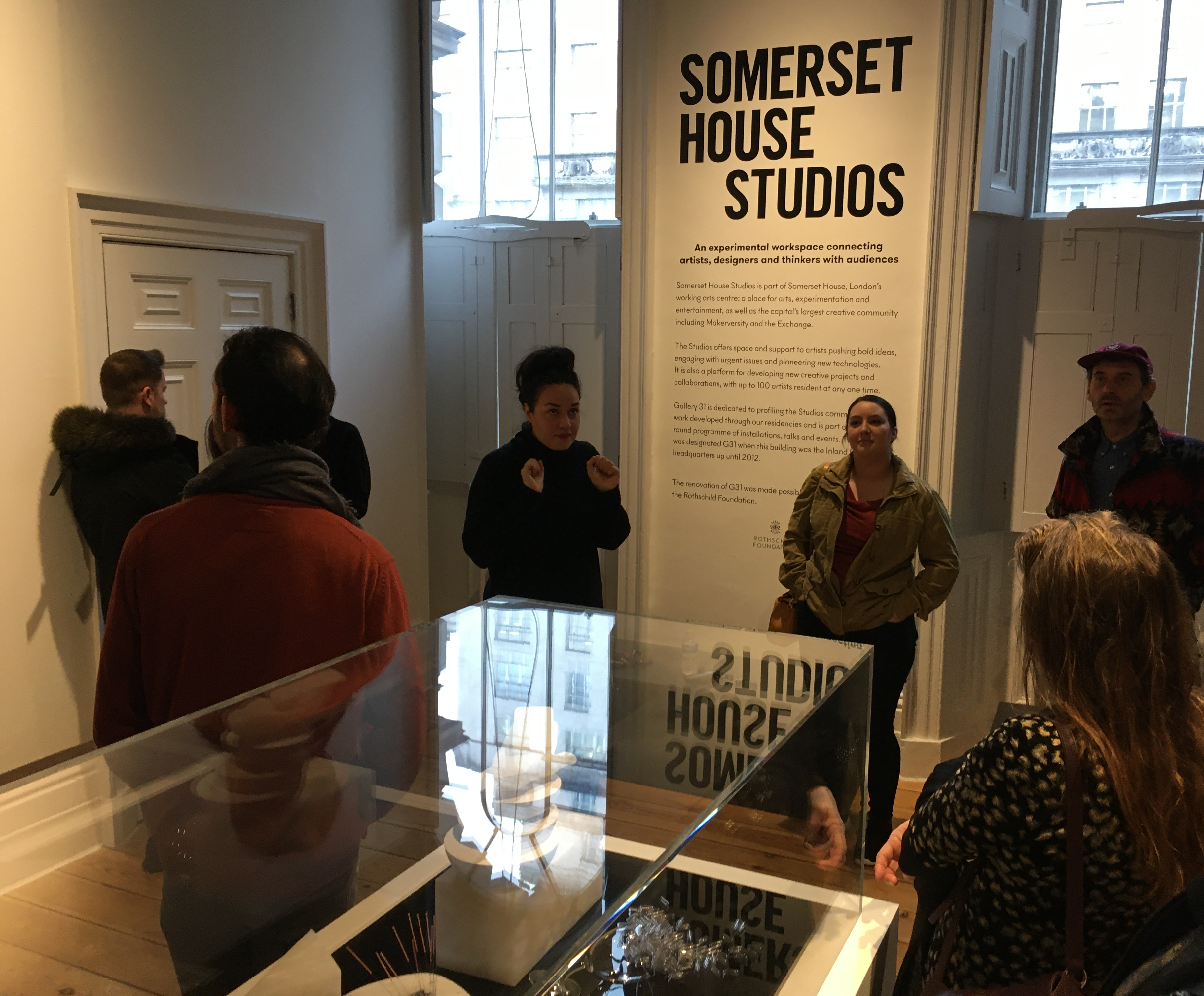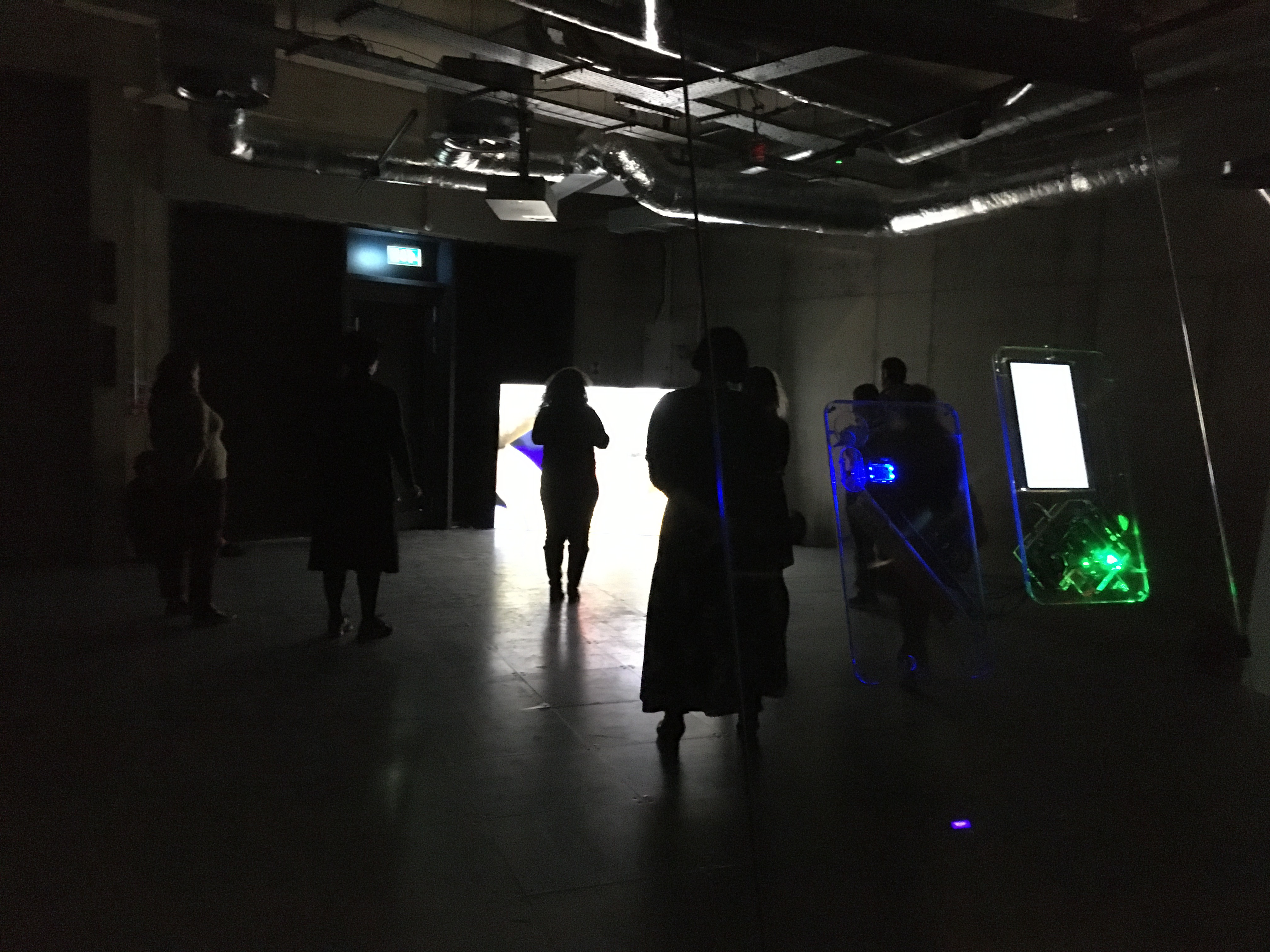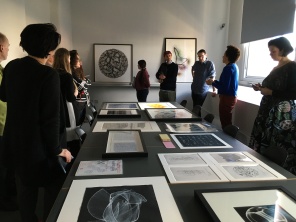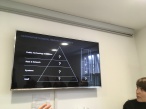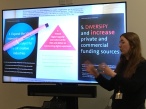Curating Art after New Media – Professional Development Course
This intensive week-long course is aimed at curators, exhibition organisers, educators and others working with art now. It critically examines how curating can best match contemporary art practices. It ran 2014-20 in Central London, and in 2021 online, by invitation. Further details contact beryl.graham@sunderland.ac.uk.
2022: Publication PDF ‘To Fit The New Art’
To Fit the New Art: 7 Years of the Curating Art After New Media Curators’ Updating Course
Click here to download 37MB PDF
Beryl Graham and Suzy O’Hara
with additional contributions by Tania Aedo, Victoria Bradbury, Rene Garcia Cepeda, Ben Evans James, Irini Papadimitriou, Georgia Smithson, Simeon Soden, and course participants.
2022 University of Sunderland ISBN: 978-1-906832-48-3
This publication is the celebration of a work-in-progress: the professional updating short course for international curators, Curating Art After New Media. As the course has been based on the generosity of many curators sharing their knowledge, the intent of this publication is to further share emerging new media art practices, and to discuss how curators can best fit their practices, so that audiences can engage with this exciting art.
The one-week annual course ran in London 2014-20, and for obvious reasons, 2021 took the form of an online reprise. The course was instigated by Sarah Cook and Beryl Graham of CRUMB at the University of Sunderland, and was originally an off-campus section of the MA Curating course, also available to international curators. PhD students from the University also co-programmed the course each year.
Course attendees have included curators and researchers from Hong Kong, Bahrain, India, the USA, Canada, Austria, the Netherlands, Greece, Ireland, France, and the UK, and have directly fed into impressive subsequent curatorial practice and projects. The organisations that we visited in London targeted a broad range of scales (Tate, Furtherfield), disciplines (Wellcome Collection, Iniva), and sectors (MachinesRoom, The Open Data Institute (ODI)). This strategy aimed to reflect the tendency of new media to cross many boundaries, where curators must also follow.
This ongoing process is reflected in the nature of the document, i.e. this is more of a collection of notes and reflections on a currently developing field than an academic closed position. By making the publication available as a free PDF, we hope to continue to get feedback and comments, which will build upon this knowledge. This publication therefore hopes to inform further admirable practice and we hope that curators will stay in touch about their future practice!
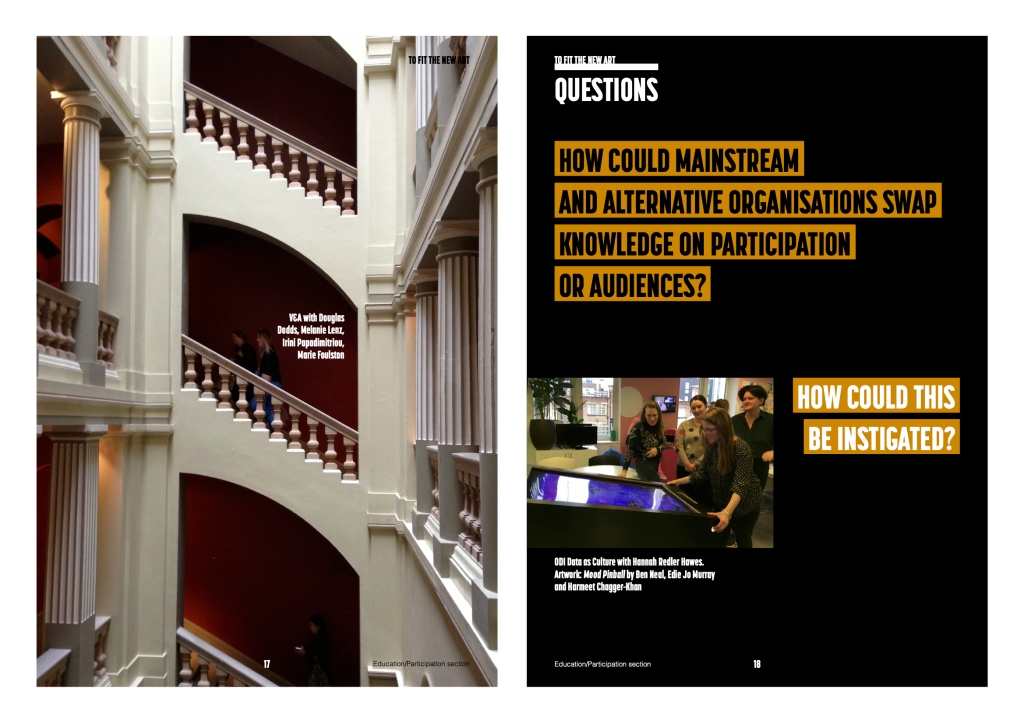
The first 50 pages (no download) are also available from Issuu:
2021: Online Reprise Version
Wed 23 Jun 2:00-5:00pm BST; Thur 24 Jun 2:00-5:00pm BST Online
Since 2014, each February we have run the Curating Art After New Media professional development course for curators, in London. In 2021, for obvious reasons, we have decided to have an online-only ‘reprise’ of the course, to discuss what has changed for curators over these 8 years.
We have invited two guests to help us reflect, and to answer your questions:
- Irini Papadimitriou, Creative Director | FutureEverything, formerly at V&A museum, and Waterman’s Art Centre, UK
- Tania Aedo, coordinator of Cátedra Max Aub for Transdiscipline, Art and Technology, at National Autonomous University of Mexico City.
We are inviting all of the past attendees, guests and hosts of the course, to this event, which will be free of charge. The second day will be led by Suzy O’Hara, and will particularly include art ‘production’, including maker spaces, labs and hacks. We are aiming for this to lead to a small publication.
2021: Kelas Seni Rupa – Curating Art After New Media, in Jakarta
I’m very pleased to say that I’m workshop leader for a version of this course in Jakarta, which is Indonesia’s first such event. It is online, of course, and watch this space for news of another online version of this course this summer …
A neophyte’s adventures in new media+
What a whirlwind week it has been. Much to think about, and as I while away my time at Heathrow ahead of my flight back to the States, I thought I would take this time to dig a bit into a reflection on the week and its highlights (for me), which will affect my curatorial practice in the short + long-term at the Binghamton University Art Museum.
We began the week with some quick presentations on our work as it relates to the course, and while my own curatorial work has not touched on new media (and beyond) too much, I have worked in areas adjacent. You can see the highlights here (hopefully it will load better than it did at Ping Pong!) Ahead of these presentations, I appreciated the reading selections Beryl gave us. For a new media+ neophyte, it was helpful to get my sea legs about definitions and frameworks: new media is about process rather than object, using verbs of behavior instead of nouns of media. New media is “art that is made using electronic media technology and that displays any or all three of the behaviors of interactivity, connectivity, computability in any combination.” (Beryl Graham + Sarah Cook’s definition in Rethinking Curating, building off the work of Steve Dietz) I also appreciated the framing device of Graham + Cook’s chapter on “Participative Systems,” reminding the curator that they are not placing an object, but “providing a platform for participation according to an artist’s blueprint,” and that curators “need to understand how platforms work,” “trust the artist and audience,” and “gain critical vocabulary.” I took these reminders to heart as I dug into the week ahead.
Our conversations with Sarah Cook about her work on the Somerset House’s exhibition 24/7 easily stands out as one of the highlights of the week. The exhibition was standout, but what made it even more memorable was Cook’s reflections on the process of curating, discussing her deliberate foregrounding of the five zones of the exhibition in the first gallery (giving the viewer an overview as they dig into detail through the rest of the exhibition); working with a theater lighting designer to create thematic difference and visitor experience through light: sunset, surveillance, sunrise, etc.; and the use of intentional spaces of respite along the way.
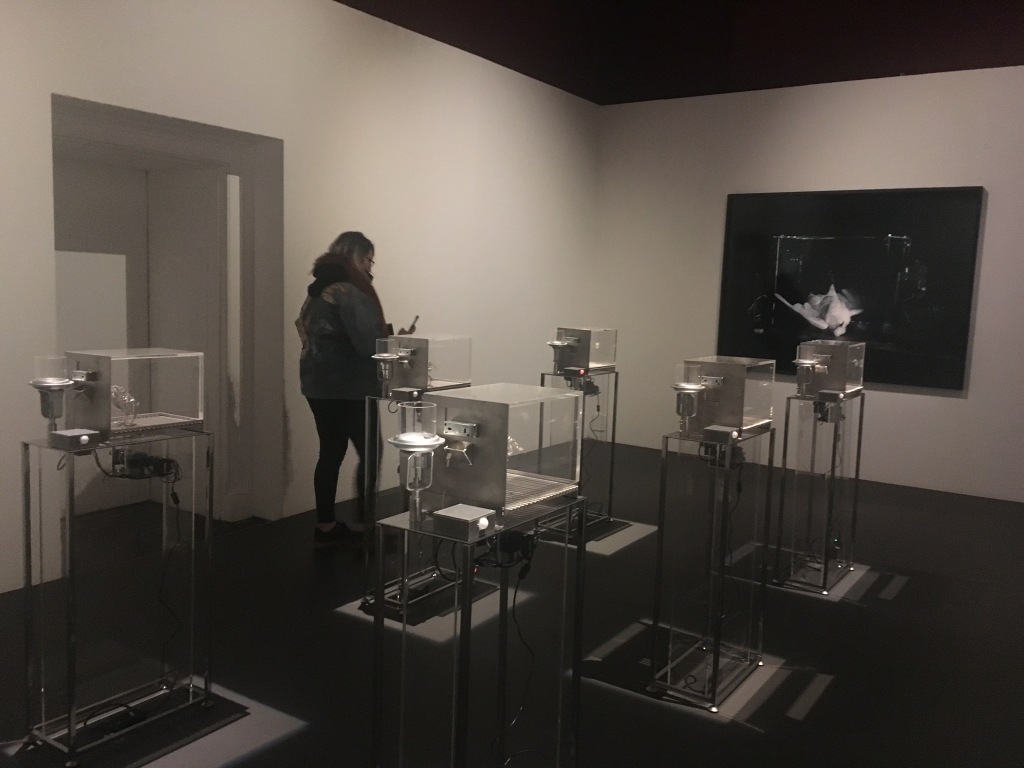
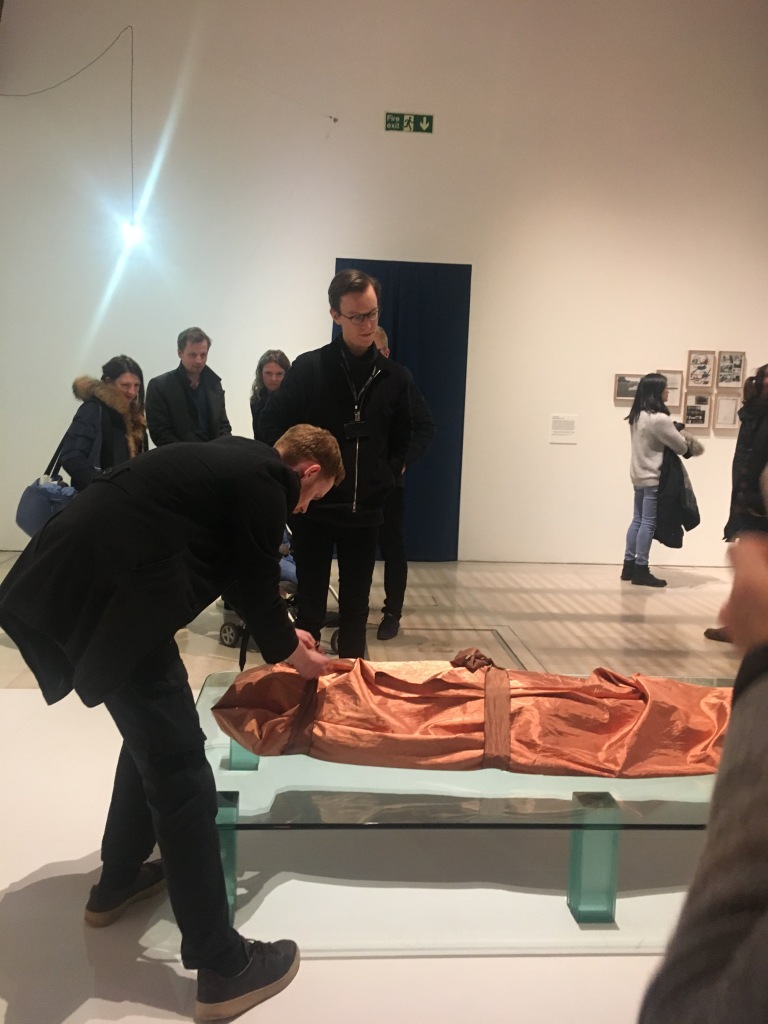
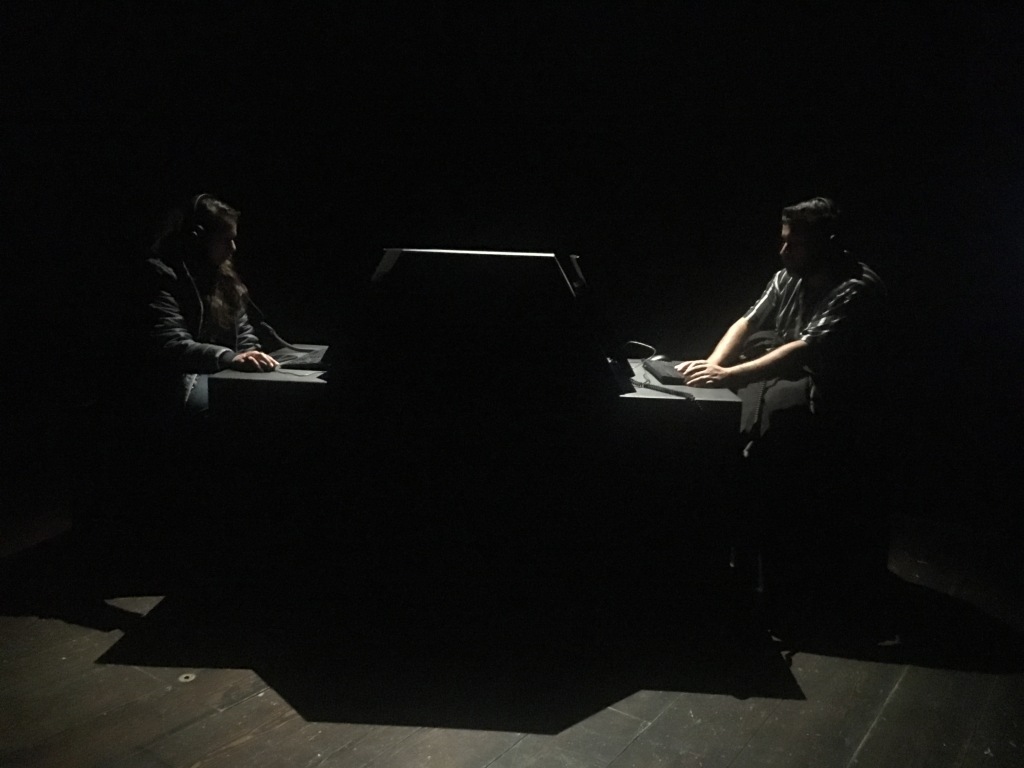
Another standout was the arebyte Gallery, who focuses their exhibition programming on digital and new media technology. Our conversations in the wrap-up helped me frame why they were such an interesting organization: the fluidity embedded into their organization, as well as the ways that their mission and funding model are built into their exhibition space. Working with developers, the organization provides about 100 studios for artists, scattered around London. There is uncertainty built into the model, as studios are only available for the time between purchase and development, but the model provides space for artists at subsidized rates ahead of development, and the organization utilizes the incoming (subsidized) rents to ensure an exhibition cycle of about 7 per year (along with other collaborative funding). It is a way for artists to find ways to work in the neoliberal age. The current work on view, Helen Knowles’ Trickle Down, a New Vertical Sovereignty (2019) is a whip-smart examination of the current finance system and wealth disparity through (not about) block chain. The installation is sharp, thinking deeply about how to engage with screen-based works that don’t treat them like an analog two-dimensional work.
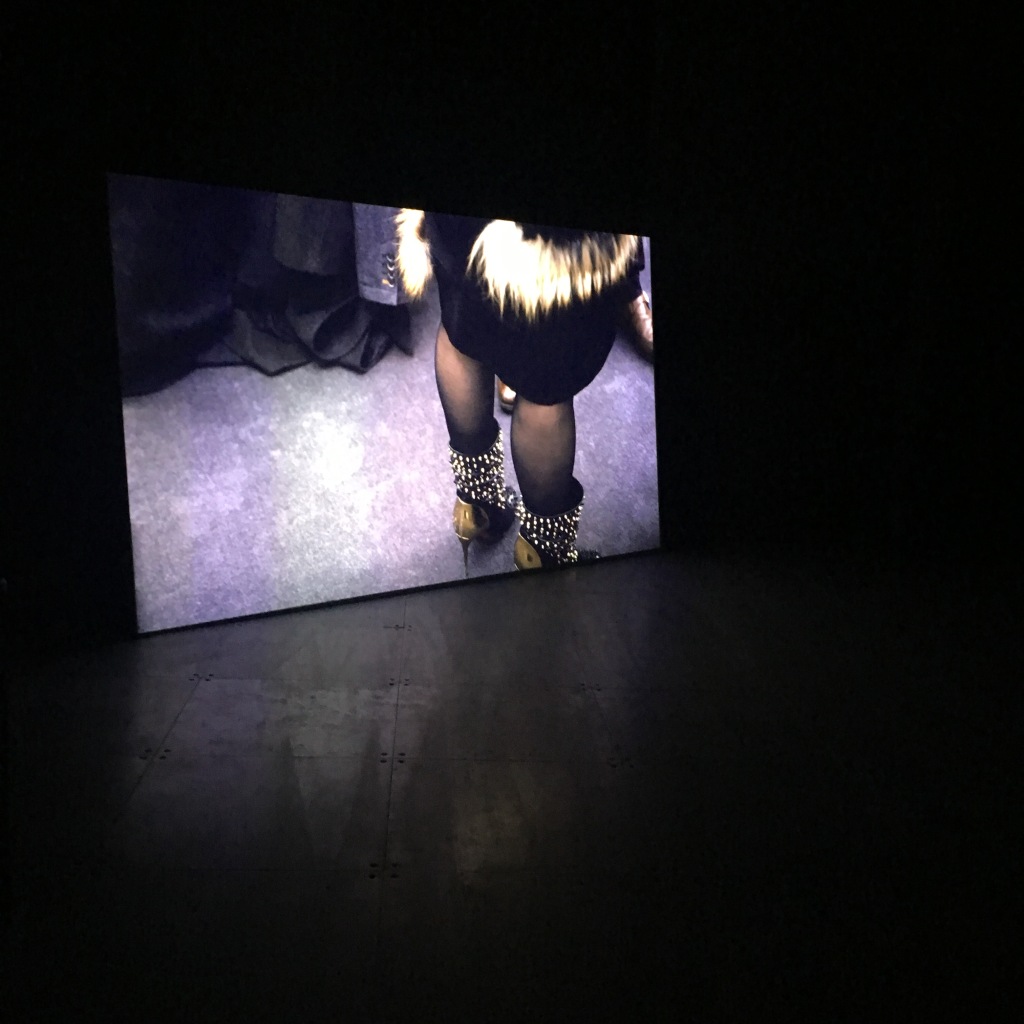
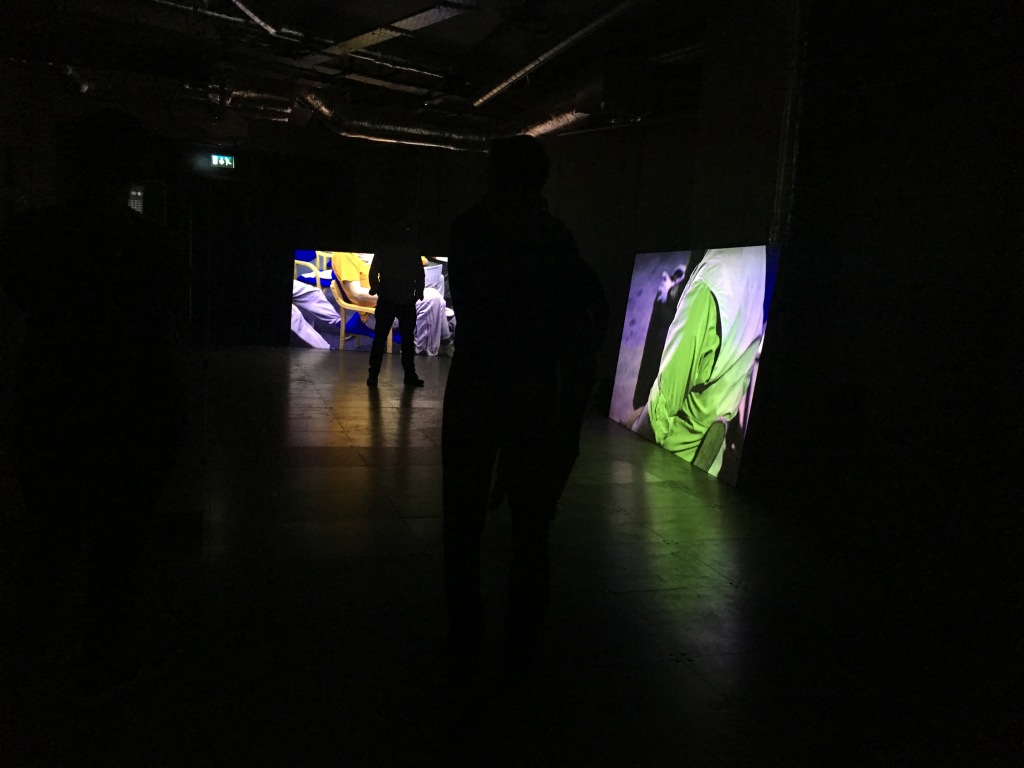
I deeply appreciated our visit to the Wellcome Collection. Both James and Danny were thoughtful and honest about their evolving thinking on the collection and the digital interventions around it. James, for example, engaged in a dialogue with the group about the permanent collection display of Medicine Man, and the Victorian, colonialist, and greedy impetus behind the collecting practices of Henry Wellcome. He spoke about the ways that the Collection is revising the display, not through the eyes of Henry Wellcome, but instead tethering their curatorial practice to new research in partnerships outside of the building, and to personal connection to the materials. The project has an intentional 5-year lead-in, and in the interim the gallery the gallery will function as a flexible space for intervention. This tether to the personal was also relevant in the recent projects lead by Danny as part of the digital strategy for the Collection, especially through its Stories project, a visually-led zine (in digital and now analog form) that brings in personal works that spin off/are adjacent to the collection.
An unexpected benefit of the project was the ways that the visits helped shape my evolving thinking on the ways that we work continue to make inroads in creating a shared authority at BUAM, specifically through the projects led by Tate Britain and the Science Gallery. A subgroup of the Tate Collective, a large group of young folks between the ages of 15-25, the Tate Britain Lates Research Group programs the Lates program, a gathering space for experimentation and idea collaboration built on a festival model. The Research Group functions as a means by which to guide the young folks through institutional processes and curatorial practices. There are many young folks involved in the program which provides opportunity for scaffolded autonomy and for folks to wander in and out (and back-in again) of the program as their interest and personal needs dictate. They function not as consultants, instead there is an intentional, active engagement through a practitioner-research model. The Science Gallery at Kings College London’s Young Leaders Program is also interesting in its structure. They only have a small number of members of the 18-month mentorship program. The members begin in an advisory position, where the Gallery is looking for their gut response to works already in process (they run projects in parallel stages of development, and members of the YLP see and participate in projects at various stages), they then move into an advocacy capacity, finishing their time in an ambassadorial role for the gallery.
Some loose ends:
The importance of building distributed networks in this work, especially around knowledge/skills/resources/equipment.
The function of ‘Lates’ as a mode of bringing in works in progress to the museum through more of a festival framework, which allows additional modes of practice into museum spaces.
New media as a means by which to make systems visible (and perhaps subvert them along the way).
The need to build time and support for this work within our institutions.
Next up: dig into this stack of books that was waiting for me on my return home.
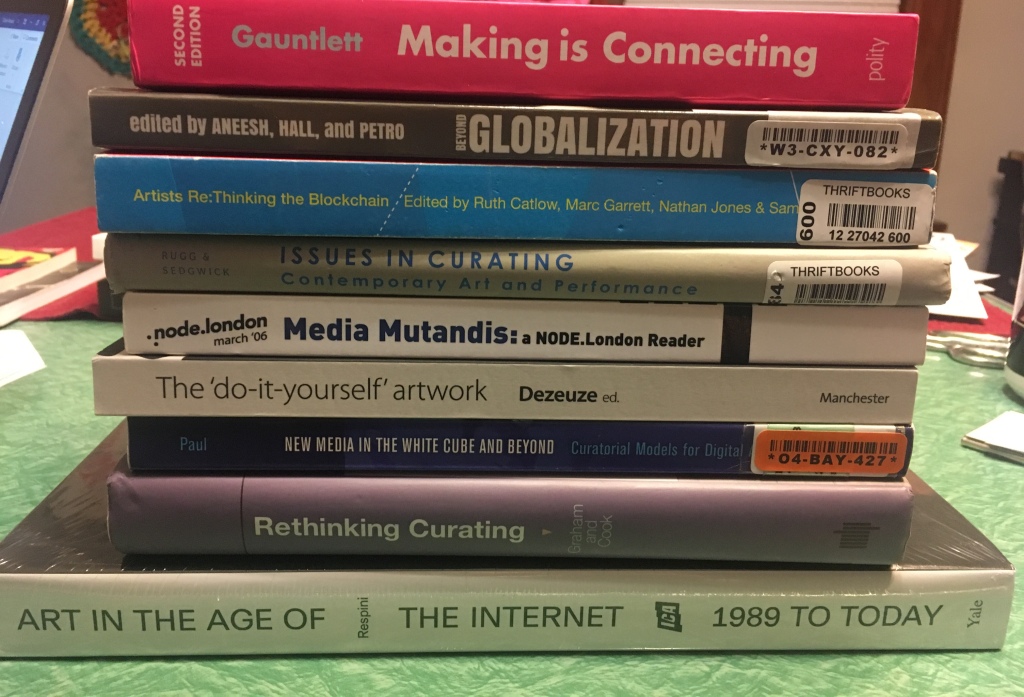
I wrap up the week still feeling like a neophyte in the arena of curating new media+, but a neophyte with frameworks from which to build. Where all this will lead at Binghamton still remains to be seen, but keep an eye on BUAM to see.
Big thanks to:
Beryl Graham + Ben Evans James for facilitating the course.
The amazing network of colleagues I got to know over the course of the week.
The folks who shared with us their time, knowledge, and experience.
–Claire L. Kovacs, curator of collections + exhibitions, Binghamton University Art Museum
website
twitter
2020: Day 6 furtherfield and The Photographers’ Gallery
Furtherfield Marc Garrett, on DIWO, NODE.London festival, and assemblage as a method (assemble what you need to make it happen). The post-digital in everyday situations, not the post-internet in fine art venues.
The Photographer’s Gallery Jon Uriate, Sam Mercer, on Digital Programme, and understanding Imagenet. Mohamed Bourouissa’s AR app in the gallery, image.
2020: Day 5: ODI and Science Gallery
ODI (Open Data Insitute) Hannah Redler Hawes, on 25 data types including ‘Anecdata’, closed, open, and shared. Is the infinite reproducibility of digital media actually true? Digital twinning? Kipu?
The Science Gallery John O’Shea, Jennifer Wong, Alastair Frazer, and Helen Zaplinsky on always having an open call, handouts, layers of collaboration, layers of research.
Exhibition in Mayfair
This is from Rhys: “Harun Farocki & Hito Steyerl: Life Captured Still”, at Galerie Thaddaeus Ropac. It’s at 37 Dover Street in Mayfair, close to many other dealers. https://www.galleriesnow.net/shows/life-captured-still-harun-farocki-hito-steyerl/
2020: Day 4: Serpentine and V&A
Serpentine Gallery, Ben Vickers, and Kay Watson, on curating the systems of a gallery, Hito Steyerl app, Ian Cheng, AI, and a reflexive space for curatorial R&D.
V&A Douglas Dodds, Melanie Lenz, on Vera Molnar’s ‘machine imaginaire’, algorists, and the grudging acceptance of computer art into collections as ‘perhaps a characteristic aberration’. Natalie Kane on collecting apps as design, and Anatomy of an AI (2018) by Kate Crawford and and Vladan Joler. Marc Barto, on refreshing teaching resources, and Filthy Lucre.
2020 Day 3: Wellcome Collection, Iniva, and Tate Britain
Wellcome Collection: James Peto, and Danny Birchall candidly discussing ‘all those politics’, and the fantastic art of Erika Scourti’s Empathy Deck, Jordan Baseman’s prescient Radio Influenza and the lovely considered Reading Room as a space of unexpected conversation.
And whilst in a library state of mind, fantastic to see Iniva‘s new library/and exhibition space to discuss with Simina Neagu, the nature of ‘research-led art’.
At Tate Britain Adrian Shaw, Curator Late at Tate Britain on Tate Collectives participatory curating; Tanya Boyarkina, Assistant Curator Digital Learning on Mini Monuments and Coders of Colour; Ana Ribeiro, Conservator Time-based Media, on ‘activating’ artworks when all the documents are brought together.
2020 Day 2: Somerset House and Arebyte Gallery
What an inspiring start!
At Somerset House: Stella Sideli on how working with production and exhibition is “a lot more than” the tradition gallery curator role. How can art be about change, an be in a static vitrine? Sarah Cook on the major 24/7 exhibition, and the excellent point that if press reviewers can get a good handle on a big show in the first 6 works, combining historical and contemporary works in various media, then the problem of informed criticism including new media art, can be helped.
At Arebyte Gallery Claudel Goy, and Rebecca Edwards, on production studios both both artists and designers in an expensive city, and how to avoid treating screens like paintings on the wall. The immaculately researched, collectively workshopped, and gorgeously installed exhibition Trickle Down: A New Vertical Sovereignty by
Helen Knowles was very inspiring.
